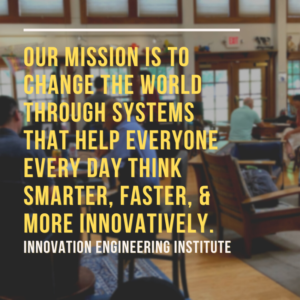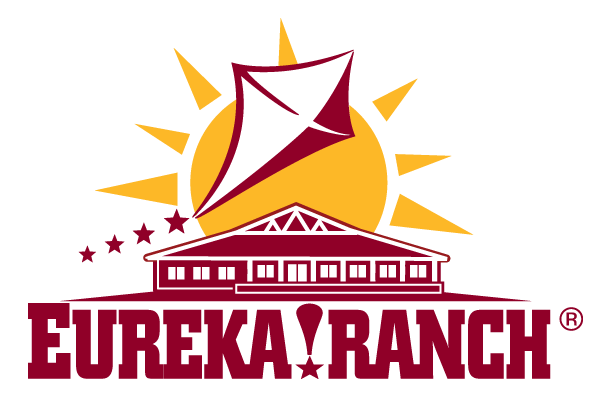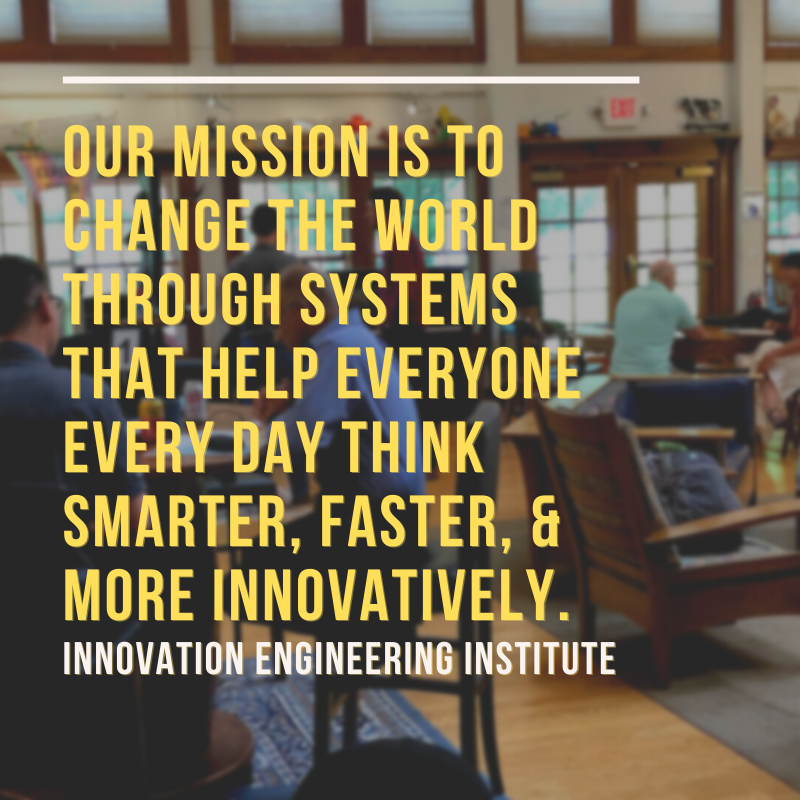For decades we’ve helped companies create new innovations for products, services, and systems. In most cases, those new inventions required more than just a new widget, device, or marketing slogan to make them possible. They required an entirely new business model.
Across the years, here’s what we’ve learned are the 5 things that make Innovative Business Models that work.
Business Model Success Checklist:
- The best ones leverage 360-degree systems thinking that balances customer
 need, business wants, and operational wows.
need, business wants, and operational wows. - The best ones have a mission at the heart of them.
- The best ones are as unique as the products they promote.
- The best ones make every stakeholder feel like they’re getting an unreasonably good value.
- The best ones make something that seemed impossible, easy.
To bring the point to life, here are two business model shifts we’ve experienced firsthand.
Case Study: Training Business Model
Just after 2001, we decided to add a completely different business to our organization.
At that time, the Eureka! Ranch was known as a guru-for-hire think-tank to help organizations invent the next big thing. As such, we worked with large, multinational business teams working on the front lines to grow the business.
When we decided to create Innovation Engineering, a systems and training organization, it required a shift in business model and the invention of new enabling technologies.
Its mission is to change the world through systems that help everyone, every day think smarter, faster, and more innovatively.
But just because we knew how to innovate, didn’t mean we knew how to teach it and how to teach others to teach it. Thus began a multi-year R&D effort, collaborating with experts like the University of Maine, running 100s of experiments to invent a completely new patent-pending teaching method, Cycles to Mastery®. With the new method, anyone could successfully teach and learn new innovation skills to a mastery level at scale.
In order to change the world, we knew the scale and reach we had as a singular organization wouldn’t be enough. So we developed the Innovation Engineering Network – a collection of universities, experts, and organizations – who could deliver training to students and professionals worldwide.
After years of testing and learning, it ticks all the boxes on the business model success checklist. Today, I’m happy to report, there are over 35,000 people trained and that number continues to grow.
Example 2: Bourbon Franchise Business Model
Our sister company, Brain Brew, just launched a new company and business model – WoodCraft Bourbon Blender LLC – A franchising company. It is extremely unique and has all the hallmarks of an innovative business model that works.
Its mission is to help existing craft distilleries grow their profitability. And to help new distillery start-ups decrease investment while at the same time accelerate time to profitability.
The franchise has two operational wow’s that make it possible. It includes incredible world-class bourbon, scoring 90+ in the most prestigious competitions. It also includes the world’s first Bourbon Blending Machine – then can blend and pour a glass of your very own custom bourbon in seconds.
A WoodCraft Bourbon Blender Franchise gives stakeholders an unreasonably good value…
- Makes it easy & profitable for them. to offer custom bourbon experiences & bottles like what was done in the 1800s.
- Builds your brand by using your bottles, brand names, and trade dress.
- Give you territory exclusivity to increase profitability.
In both cases, the inspiration for the business model came from a meaningfully unique product. And we see the same thing happen to companies of all kinds and sizes. If you create something truly unique, it almost always bucks the existing business model in some way.
In the end, you have 2 choices if you develop something truly meaningfully unique. Compromise the idea to make it fit your existing business model. Or, build a business model exploits the uniqueness, and the model becomes just as innovative as the product itself.

